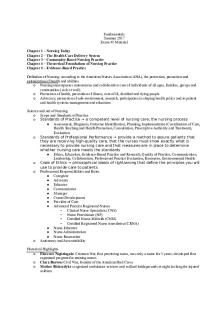Practice exam 2 (1) copy PDF

| Title | Practice exam 2 (1) copy |
|---|---|
| Author | Melissa Rosenberg |
| Course | Organic Chemistry II |
| Institution | The University of Tampa |
| Pages | 6 |
| File Size | 172 KB |
| File Type | |
| Total Downloads | 111 |
| Total Views | 158 |
Summary
Exam 2 Practice...
Description
Practice Exam: 1. Consider the two compounds below. Circle the more acidic compound. Briefly explain your choice, using structures when appropriate. The protons you should be considering have been drawn in.
2. Which nitrogen lone pair is more likely to function as a base? Briefly explain, using structures to help your explanation.
3. In lab, we often use TLC to separate a mixture of compounds and to watch the progress of a reaction. Some molecules can be viewed using a UV light while others require us to stain the TLC plate. Consider the following two reactions and decide whether the following reactions would require you to stain the plate or if you could use a UV light. Briefly explain your reasoning.
4. Can 2,3-ditertbutyl-1,3,-butadiene easily undergo a Diels-Alder reaction? Explain your reasoning.
5. Provide a systematic name for the following molecules:
6. Label the following molecules as Aromatic, Antiaromatic, or Nonaromatic.
7. Consider the following molecule. A diagram of the highest occupied molecular orbital (HOMO) is shown.
a. Based on the diagram, if this molecule went through an electrocyclic reaction, would you expect it to proceed in a conrotatory or a disrotatory fashion?
b. Based on the information learned in part A, draw the product of the electrocyclic reaction. Be sure to include the correct stereochemistry.
8. Propose an efficient synthesis for the following transformation. You may use any reagents or molecules you wish.
9. Draw the complete mechanism for the following transformation. You must include any charges, lone pairs and stereochemistry if necessary. You must also show the formation of the electrophile and regeneration of any catalysts. Any resonance structures important to the mechanisms should also be shown.
10. a. Draw all products that are expected when 2-ethyl-3-methyl-1,3-cyclohexadiene is treated with HBr at room temperature, and show a mechanism of their formation. b. After performing the reaction in part A, the reaction flask is heated to 40ºC and two of the products become the major products. When the flask is then cooled to 0ºC, no change occurs in the product distribution. Explain why an increase in temperature causes a change in the product distribution and explain why a subsequent reduction in temperature has no effect.
11. Predict the major product of the following reactions. Include proper stereochemistry if applicable. If no reaction is expected, write no reaction.
11. Consider nitrobenzene. a. Is the aromatic ring activated or deactivated? Use resonance structures to support your answer.
b. Predict the product(s) when nitrobenzene is treated with a mixture of nitric and sulfuric acids.
12.. Propose an efficient synthesis for the following transformations:...
Similar Free PDFs

Practice exam 2 (1) copy
- 6 Pages

Practice Exam 1 Key 2
- 11 Pages

Exam 1-sample copy
- 9 Pages

Exam 2 practice questions
- 14 Pages

X100 Practice Exam 2
- 16 Pages

Practice Midterm Exam #2
- 17 Pages

FSTC201 EXAM 2 practice
- 8 Pages

Exam 2 Practice Questions
- 8 Pages

Exam 2 practice problems
- 4 Pages

Practice Exam 2
- 7 Pages

Practice Exam 2
- 9 Pages

Exam 2 Practice Problems
- 8 Pages

Practice Exam 2, questions
- 16 Pages

Practice exam 2 - stat
- 10 Pages

Copy of Fundamentals Exam 1
- 31 Pages
Popular Institutions
- Tinajero National High School - Annex
- Politeknik Caltex Riau
- Yokohama City University
- SGT University
- University of Al-Qadisiyah
- Divine Word College of Vigan
- Techniek College Rotterdam
- Universidade de Santiago
- Universiti Teknologi MARA Cawangan Johor Kampus Pasir Gudang
- Poltekkes Kemenkes Yogyakarta
- Baguio City National High School
- Colegio san marcos
- preparatoria uno
- Centro de Bachillerato Tecnológico Industrial y de Servicios No. 107
- Dalian Maritime University
- Quang Trung Secondary School
- Colegio Tecnológico en Informática
- Corporación Regional de Educación Superior
- Grupo CEDVA
- Dar Al Uloom University
- Centro de Estudios Preuniversitarios de la Universidad Nacional de Ingeniería
- 上智大学
- Aakash International School, Nuna Majara
- San Felipe Neri Catholic School
- Kang Chiao International School - New Taipei City
- Misamis Occidental National High School
- Institución Educativa Escuela Normal Juan Ladrilleros
- Kolehiyo ng Pantukan
- Batanes State College
- Instituto Continental
- Sekolah Menengah Kejuruan Kesehatan Kaltara (Tarakan)
- Colegio de La Inmaculada Concepcion - Cebu
